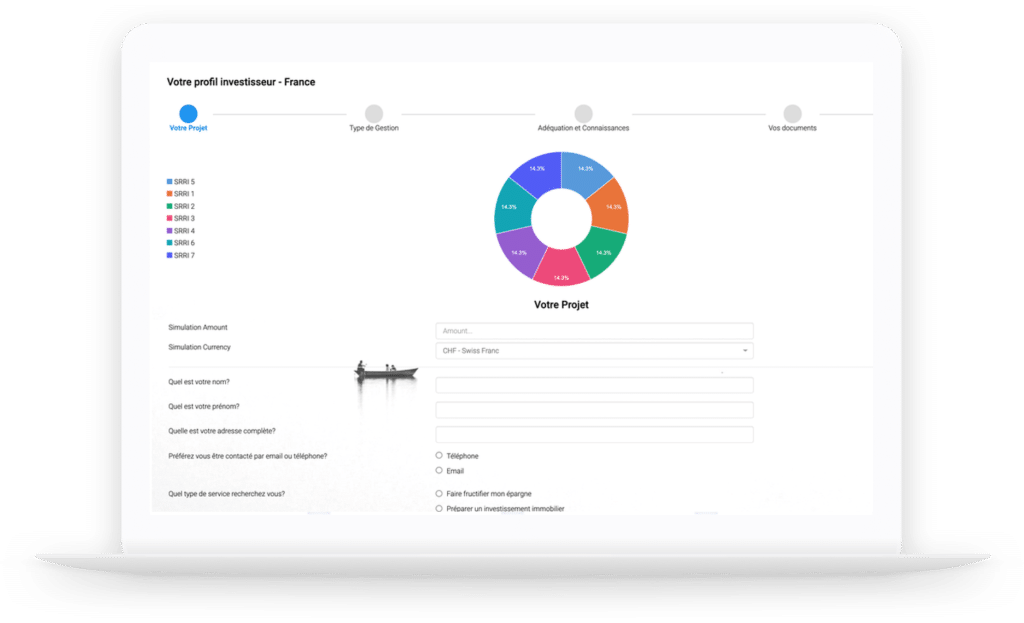What is climate change adaptation financing?

As the effects of climate change become more and more apparent, it is important for financial firms to start adapting their financial planning to reflect these changes. The most obvious way that climate change will impact businesses is through increased costs associated with doing business. For example, if your company relies on goods that are transported by truck, you may see an increase in your shipping costs as a result of extreme weather conditions. In this blog post, we will discuss some ways that you can adapt your financial plans to combat the effects of climate change and how to reflect these global economic trends into an investment portfolio.
1. Introduction: Why businesses need to start adapting their financial plans to climate change.
2. The most obvious way climate change will impact businesses: increased costs.
3. Three specific examples of how businesses may be impacted by climate change.
4. Five ways businesses can adapt their financial plans to combat the effects of climate change.
5. Conclusion: The importance of taking action now to adapt to the changing landscape of business brought on by climate change.
Why do bankers and wealth managers need to start adapting their financial plans to climate risk change?
As we all know, the effects of climate change are already being felt by businesses and industries across the globe. The increased frequency and severity of natural disasters are taking their toll on infrastructure, supply chains, and profits. And with the world’s population expected to reach 9.7 billion by 2050, the pressure on resources will only continue to increase. Addressing climate change is not a topic that might interest all your investors so you should be ready with two types of onboarding if you are using these elements.
We advise financial firms to use InvestGlass onboarding forms to reflect those strategies. InvestGlass is an innovative wealth management platform designed to help investors, banks, and wealth managers adapt their financial plans to combat climate change. Based on a powerful artificial intelligence engine and advanced data analytics, the platform provides a comprehensive suite of features that enable firms to gain deep insights into their portfolios and develop strategies for mitigating the risks associated with climate change. InvestGlass offers a digital onboarding tool to present investment portfolios and confront them with climate change scenarios.
With InvestGlass digital onboarding you can :
• Create tailored onboarding forms that reflect climate change strategies and objectives.
• Collect and analyze data from clients on their environmental policies, investments, sustainability efforts and carbon footprints.
• Automate reporting processes to ensure compliance with regulatory requirements.
• Generate custom reports for investors on their climate change impact.
We found that financial firms usually refer to the following topics:
- climate scenarios
- financial stability implications
- rising sea levels
- net zero emissions efforts
- carbon emissions
- greenhouse gases
- financial regulators incentive
- climate policies
- regulatory frameworks and incentives

That’s why it’s more important than ever for businesses to start adapting their financial plans to account for the effects of climate change. By doing so, they can protect themselves from risks and take advantage of opportunities that arise from a changing climate.
There are a number of ways businesses can adapt their financial plans to climate change. One is to account for physical risks, such as the damage caused by hurricanes or floods. Another is to account for transition risks, such as the costs associated with switching to low-carbon technologies. And finally, businesses can also consider opportunity costs, such as the investment potential of clean energy projects.
No matter which approach businesses take, one thing is clear: climate change is no longer a distant threat; it’s a reality that must be factored into all financial decision-making.
The most obvious way climate-related risk change will impact financial markets: is through increased costs.
Climate change will have a profound impact on businesses in a number of ways, the most significant of which will be increased costs. With global temperatures set to rise by an average of 2°C over the next few decades, businesses will have to contend with increased costs associated with everything from energy and water use to transportation and raw materials. In addition, they will also face greater risks from extreme weather events, which are expected to become more frequent and intense as the planet warms. Some clients and particularly generation Z can be sensible of these associated financial risks. Generation Z are kids born between 1996 and 2009, they are aware of climate change which is why it’s important to address it in your onboarding process.
While some businesses will be able to adapt to these changes and even find opportunities in them, others will struggle to cope. The impact of climate change is likely to fall disproportionately on small businesses and those in developing countries, which are often less well-prepared for coping with such shocks. As a result, climate change could exacerbate existing inequalities and lead to further economic instability.
The best way for businesses to prepare for the challenges posed by climate change is to start planning now. This means understanding the risks they face and taking steps to mitigate them. It also means making sure they have adequate insurance coverage in place in case of damage from extreme weather events. And it means investing in green technologies that can help reduce their carbon footprint. Those businesses that don’t take action now are likely to find themselves at a competitive disadvantage in the years ahead.
Three specific examples of how businesses may be impacted by climate change.
Climate considerations will have a profound impact on businesses across the globe. In fact, it is already doing so. Here are three specific examples of how businesses may be impacted by climate change:
1. Increased costs: Many businesses are already seeing their costs increase as a result of climate change. For example, those in the agricultural sector are being hit hard by droughts, which are becoming more common and more severe due to climate change. This is leading to higher prices for food and other commodities. Storms and floods are also becoming more common and more severe, which is causing damage to infrastructure and leading to higher insurance premiums. All of these factors are increasing costs for businesses, which will eventually be passed on to consumers in the form of higher prices.
2. Disruptions to supply chains: Climate change is also causing disruptions to supply chains. For example, extreme weather events can damage infrastructure and disrupt transportation, which can lead to shortages of goods and materials. This can cause major problems for businesses that rely on just-in-time production methods. Additionally, as climates change, certain areas may become too hot or too dry to grow certain crops, disrupting agricultural supply chains.
3. Damage to brand reputation: As consumers become more aware of the risks of climate change, they are increasingly taking into account a company’s environmental record when making purchasing decisions. This means that companies that are seen as not doing enough to combat climate change or that are perceived as contributing to it could see their reputations damaged. This could lead to lower sales and revenue, as well as difficulties attracting and retaining customers and employees.

Five ways businesses can adapt their financial plans to combat the effects of climate change.
Climate change is already having an impact on businesses around the world, and that impact is only going to become more pronounced in the years to come. As a result, it’s increasingly important for businesses to adapt their financial plans to account for the effects of climate change and investors will have to spot those five ways. Here are five ways businesses can do just that:
1. Incorporate climate-related risks into financial planning: Many businesses still don’t account for climate-related risks in their financial planning, but this is something that needs to change. Most businesses don’t have systemic risk analysis, task force or comprehensive reports of their physical assets. Climate change will have a wide range of impacts on businesses, from increased costs associated with extreme weather events to disruptions in supply chains. By incorporating these risks into financial planning, businesses can be better prepared to deal with them when they arise.
2. Invest in climate-resilient infrastructure: Another way businesses can adapt their financial plans to combat the effects of climate change is by investing in climate-resilient infrastructure. This includes things like flood-proofing buildings, installing backup power generators, and creating green space that can help absorb excess rainfall. Such investments can help protect businesses from the increasing frequency and intensity of extreme weather events.
3. Build climate change considerations into decision-making: Many business decisions – from where to locate a new facility to what type of products or services to offer – will be affected by climate change. As such, it’s important for businesses to build climate change considerations into their decision-making processes. This means taking things like future sea level rise and changes in local temperature and precipitation patterns into account when making decisions that could have long-term implications.
4. Factor carbon pricing into business plans: An increasing number of jurisdictions are putting a price on carbon, either through taxes or cap-and-trade systems. As a result, businesses need to factor carbon pricing into their plans and budget for the potential increases in costs that could result from it. Carbon pricing will also have an impact on investment decisions, as businesses seek out projects that will help them reduce their emissions and meet any emissions targets that may be in place.
5. Support public policy measures to address climate change: In addition to taking action themselves, businesses should also support public policy measures that aim to address climate change. This includes things like carbon taxes or cap-and-trade systems, as well as measures to promote renewable energy and energy efficiency. By supporting such measures, businesses can help create the conditions necessary for a low-carbon economy and reduce the overall impact of climate change.

Why the financial sector should take action now to adapt to the changing landscape of business brought on by climate risks.
As the effects of climate change become more and more apparent, it is clear that businesses need to start taking action to adapt. The changing landscape of business brought on by climate change will have a major impact on many aspects of operations, from supply chain management to employee safety.
One of the most important things for businesses to do is to start planning for disruptions. Climate change is already causing extreme weather events that can disrupt business operations. By planning ahead and having contingency plans in place, businesses can minimize the impact of these disruptions.
Another important consideration for businesses is their supply chains. As global temperatures rise, certain regions will become increasingly uninhabitable or difficult to access. This could lead to disruptions in supply chains and a decrease in the availability of certain raw materials. Businesses need to be aware of these risks and plan accordingly.
Finally, businesses need to consider the safety of their employees. Extreme weather events can pose a danger to workers, and as temperatures continue to rise, these dangers will only increase. Businesses need to put policies and procedures in place to ensure that employees are safe during periods of severe weather events. You can add those videos in the onboarding pages to present your investors how companies are
Climate change is a major challenge that businesses need to start preparing for now. By taking action to adapt, businesses can protect themselves from the effects of climate change and ensure that they remain operational during periods of extreme weather.
1. Introduction: Why businesses need to start adapting their financial plans to climate change.
As the world continues to experience the effects of climate change, businesses are starting to feel the pinch in terms of increased costs and disruptions to their operations. While some may be tempted to simply ride out the storm, the reality is that the business landscape is changing and those who don’t adapt their financial plans accordingly are likely to find themselves at a competitive disadvantage.
2. The most obvious way climate change will impact businesses: increased costs.
One of the most immediate ways that climate change will impact businesses is through increased costs. This could manifest itself in a number of ways, such as higher prices for raw materials, increased energy costs, and higher insurance premiums. For businesses that are already operating on tight margins, these additional costs could be enough to push them over the edge.
3. Three specific examples of how businesses may be impacted by climate change.
To give some concrete examples of how climate change could impact businesses, let’s look at three specific industries that are likely to be affected: agriculture, tourism, and construction.
Aas extreme weather events become more common, we can expect to see an increase in damage to infrastructures such as roads, bridges, and buildings. This will lead to higher repair and replacement costs for businesses involved in the construction industry.
How to use InvestGlass to adapt financial plans to combat climate change?
Your investors might not be daily wall street journal readers, instead watching Youtube or TikTok every day. Your onboarding should be adapted to different customer segments. You can add “tags” to customers who understand this specific financial risk to offer then specific marketing content.
Integrating climate risk in the portfolio is possible via the model portfolio tool. Asset prices are uploaded via your own banking source or traditional financial feed, and then adjust the weights to build your own model. Link this model portfolio inside the digital form to create an engaging onboarding experience.

If you have an existing portfolio, the InvestGlass rebalancing tool will facilitate the swapping of securities. You can turn a classical portfolio into a climate change risks enable portfolio in minutes. Portfolio rebalancing can be set on daily, weekly or monthly frequency.
Finally, InvestGlass provides you with all the financial reports and metrics you need to measure your performance and ensure that your climate change risks exposure is in line with your goals. For example, our ESG report integrates environmental data of companies into traditional financial KPIs such as return on asset or return on equity.
In conclusion, InvestGlass provides the tools to help financial planners and investors adapt their financial plans to combat climate change. Armed with the right information, your clients can make informed decisions that will protect their assets and ensure continued success in a changing world.
adaptation financing, Climate change impacting financial planning